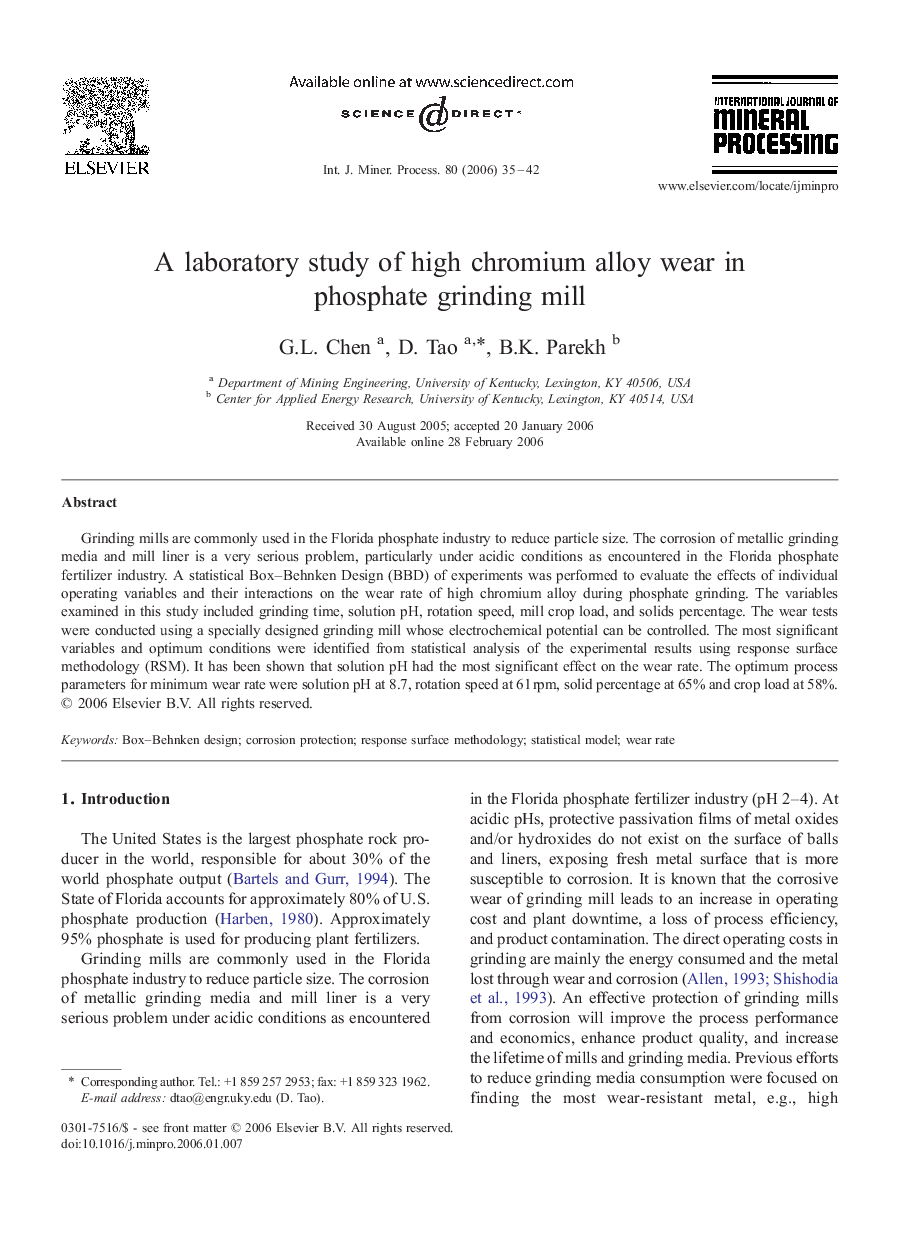| Article ID | Journal | Published Year | Pages | File Type |
|---|---|---|---|---|
| 214725 | International Journal of Mineral Processing | 2006 | 8 Pages |
Grinding mills are commonly used in the Florida phosphate industry to reduce particle size. The corrosion of metallic grinding media and mill liner is a very serious problem, particularly under acidic conditions as encountered in the Florida phosphate fertilizer industry. A statistical Box–Behnken Design (BBD) of experiments was performed to evaluate the effects of individual operating variables and their interactions on the wear rate of high chromium alloy during phosphate grinding. The variables examined in this study included grinding time, solution pH, rotation speed, mill crop load, and solids percentage. The wear tests were conducted using a specially designed grinding mill whose electrochemical potential can be controlled. The most significant variables and optimum conditions were identified from statistical analysis of the experimental results using response surface methodology (RSM). It has been shown that solution pH had the most significant effect on the wear rate. The optimum process parameters for minimum wear rate were solution pH at 8.7, rotation speed at 61 rpm, solid percentage at 65% and crop load at 58%.
